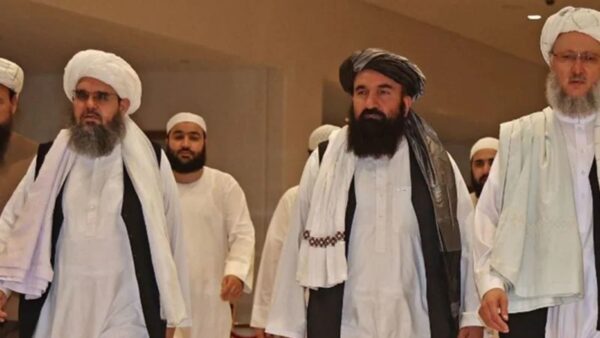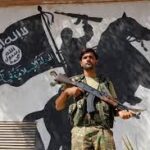The Haqqani Network has emerged because the most powerful group within the new Taliban government, with four of the clan nominated as cabinet members.
The Haqqani Network takes its name from the leader of the group, Jalaluddin Haqqani, who first fought the Soviet Army in Afghanistan as a loyal ally of the CIA and therefore the ISI, then fought the US and NATO forces, while he led a protected existence in North Waziristan, where Pakistan gave him and therefore the entire group shelter .
Jalauddin’s death was announced as having occurred of natural causes in September 2018, although it had been rumoured that he had died years before. The mantle passed to his son Sirajuddin.
Haqqani Network in Afghan cabinet
SIRAJUDDIN HAQQANI, 48, is that the new Interior Minister — a meeting that’s a finger within the eye of the international community. He has been a UN-designated global terrorist since 2007, and therefore the FBI features a reward of $ 10 million for information resulting in his arrest. No recent photographs exist of him.
According to a 2010 report on the Haqqani Network by US-based think factory Institute for the Study of War, Sirajuddin’s mother is an Arab woman who was the second wife of Jalaluddin Haqqani. She is claimed to be living during a Gulf country.
The UN listing of Sirajuddin says he “participated within the financing, planning, facilitating, preparing, or perpetrating of acts or activities by, in conjunction with, under the name of, on behalf or in support of Taliban, al-Qaeda, and Jaish-i-Mohammed.
It describes him as “one of the foremost prominent, influential, charismatic and experienced leaders within the Haqqani Network… and has been one among the main operational commanders of the network since 2004. After the autumn of the Taliban in 2001, Sirajuddin Haqqani took control of the Haqqani Network and has since then led the group into the forefront of insurgent activities in Afghanistan”.
According to the listing, he derived much of his power and authority from his father, Jalaluddin Haqqani — who was also listed, and described as “a go-between for al-Qaeda and therefore the Taliban on each side of the Afghanistan/Pakistan border”. Sirajuddin Haqqani was involved within the bombing attack against a academy bus in Kabul on June 18, 2007, which killed 35 cops .
KHALIL-UR-REHMAN HAQQANI, the uncle of Sirajuddin, who has been appointed the Minister for Refugees, was listed as a terrorist in 2011. The listing says he travelled to Gulf countries, also as in South and South-east Asia to boost funds on behalf of the Taliban and therefore the Haqqani Network.
He is said to possess been one among several people liable for the detention of prisoners captured by the Taliban and therefore the Haqqani Network. The listing links him to al-Qaeda also .
NAJIBULLAH HAQQANI, Minister for Communication, was listed in 2001. He had been a minister within the previous Taliban regime also — first the deputy minister for structure , and later, deputy minister for finance. He was militarily active until 2010.
SHEIKH ABDUL BAQI HAQQANI, an associate of Jalaluddin Haqqani and therefore the new Minister for education , is that the only leader of the Haqqani Network within the government who not designated by the UN Security Council . However, he has been sanctioned by the ecu Union.
On being appointed the shadow minister for education last month, he was reported as saying that while girls could study, “All educational activities will happen consistent with Shariah.”
Haqqani Network’s deep roots in Af-Pak
Jalaluddin Haqqani, a Zadran tribesman from the Loya Paktia (Paktia, Paktika and Khost) area in eastern Afghanistan on the brink of the border with Pakistan, was a member of the anti-communist, anti-Soviet Hizb-e-Islami, and have become active as a mujahideen within the 1970s.
He is an alumnus of the Dar-ul-ulum Madrassa, also nown because the jihad factory, in Akhora Khattak in Pakistan’s Khyber Pakhtunkhwa province.
As the frontier of the conflict came to Pakistan’s doors, he and a number of other others were trained in Pakistan for jihad. When the Soviet Army arrived, he was among the CIA’s trusted mujahideen. Charlie Wilson, the US Senator who mustered money and weapons for the war, is claimed to possess described him as “goodness personified”. During this point he forged deep ties with the ISI.
From a base in North Waziristan, Jalaluddin ran guns and fighters for the jihad during the 1980s. this is often also the time when he met Osama bin Laden in Miramshah, the headquarters town of North Waziristan. While he received largesse from the CIA and ISI, Haqqani is claimed to possess also raised his own funds from wealthy sheikhs in Gulf countries, and through his annual Haj pilgrimage.
Haqqani joined hands with the Taliban in 1995, and he and his men fought alongside the Islamist movement against the varied warring factions of the mujahideen.
When the Taliban captured Kabul in 1996, he became the Minister of Border and Tribal Affairs. the connection between him and Mullah Omar was one among common interests, but it had been hardly smooth, with Haqqani resentful of the prominence Mullah Omar gave to his clique from Kandahar.
After the ouster of the Taliban regime by the US and allied forces in 2001, the Haqqani family fled to Pakistan, where they’re believed to possess taken refuge in their old stronghold of Miramshah in North Waziristan.
They were said to be running a parallel administration there, taxing people and making money off construction contracts and investments in land within the area. Another source of income was from fund-raising within the Gulf. Kidnapping for ransom was a serious source of income, as was smuggling timber from Afghanistan into Pakistan.
In 2003, when the Taliban began regrouping, the Haqqani clan was central to their efforts. By then, Sirajuddin had appropriated most of the operational aspects of the Haqqani Network from his father Jalaluddin.
Military observers credit much of the success of the Taliban to the Haqqani Network. The us often urged Pakistan to “do more” to eliminate the Haqqani Network, but these efforts remained cosmetic.
The Institute for the Study of War report mentioned earlier says the Pakistani Army consistently refused to launch a operation in North Waziristan despite the presence of the al-Qaeda’s senior leadership there.
Even while reporting on to the Taliban Supreme Council, the Haqqani Network retained its own distinct identity.
As recently as May this year, a UN report described the Haqqani Network as “Taliban’s most combat-ready forces [with] a highly skilled core of members who concentrate on complex attacks and supply technical skills, like improvised device and rocket construction….The Haqqani Network remains a hub for outreach and cooperation with regional foreign terrorist groups and is that the primary liaison between the Taliban and Al-Qaida”.
The report, by the Taliban Sanctions Monitoring Committee, also noted that one member state had pointed to a link between the Islamic State-Khorasan Province (ISIS-KP) and therefore the Haqqani Network, but the Committee itself was unable to verify this. The link centred on the leader of the ISIS-KP, Shahab al-Muhajir, who “may even have been previously a mid-level commander within the Haqqani Network”.
An earlier report of the Committee had stated that “one Member State has suggested that certain attacks are often denied by the Taliban and claimed by ISIL-K, (same because the ISIS-KP) with it being unclear whether these attacks were purely orchestrated by the Haqqani Network, or were joint ventures making use of ISIL-K operatives”.
The 2008 Indian Embassy bombing during which a senior diplomat and a military official posted at the Embassy were killed among dozens others, mostly Afghan civilians, was blamed by US and Afghan intelligence on the Haqqani Network.
The National Directorate of Security, the intelligence of the erstwhile Afghan government, had provided communication intercepts to Indian authorities that pointed to Haqqani involvement, allegedly with ISI support. an identical claim was made by the CIA. Other reports pointed to a Lashkar-e-Taiba involvement, with support from the Haqqani Network.
The Haqqani Network is additionally said to possess been behind the attacks on Indian construction workers in Afghanistan within the years 2009-2012. The group’s long relationship with and loyalty to the ISI make it a useful asset for Pakistan, consistent with security officials. there’s considerable disquiet within the Indian security establishment that Sirajuddin Haqqani may be a member of the new government of Afghanistan.
Fountainhead of Jihad: The Haqqani Nexus, 1973-2012 by Vahid Brown and Don Rassler;
* Twelfth Report of the Analytical Support and Sanctions Monitoring Team of the safety Council Taliban Sanctions Committee, June 1, 2021 (www.undocs.org)



